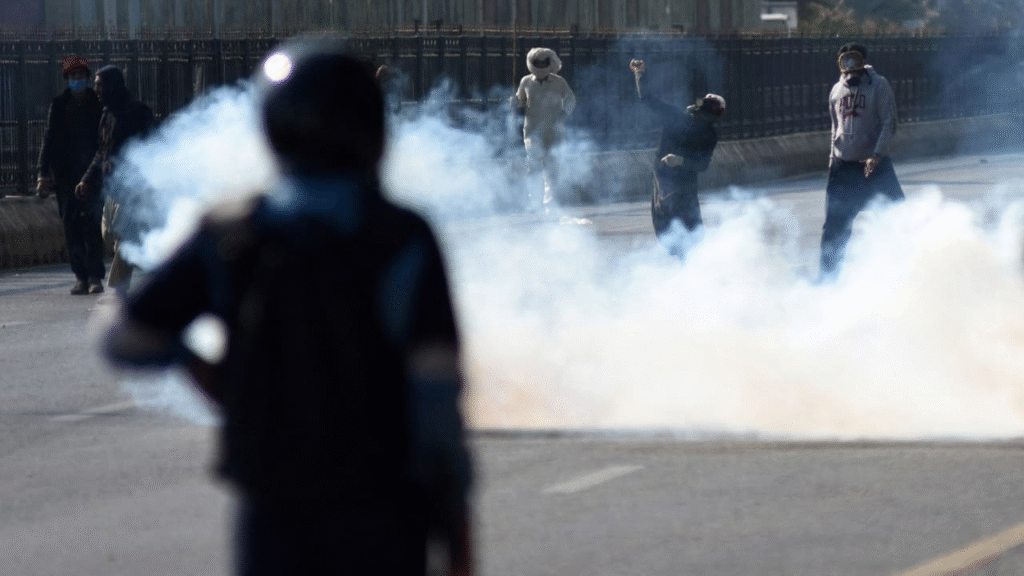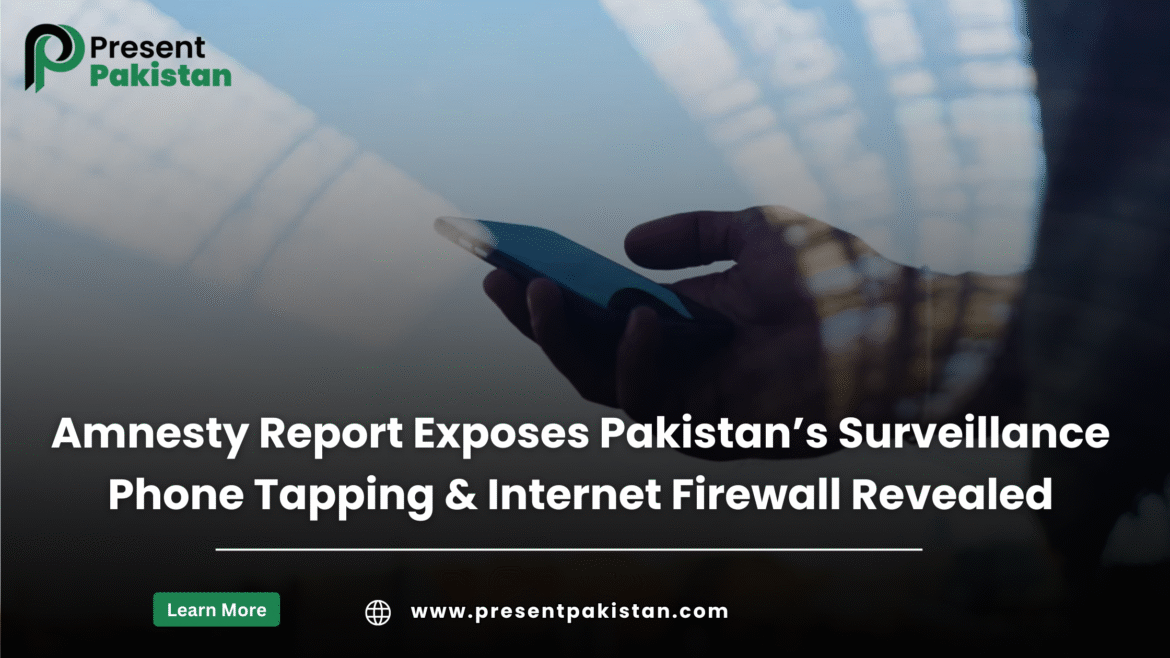Amnesty Report Sparks Global Debate
Amnesty Report Exposes Pakistan’s Surveillance Network: Phone Tapping & Internet Firewall. Allowing those terms to wash over you would create a fierce debate. The Amnesty International report has brought to light state-sponsored monitoring in Pakistan, namely, bulk phone tapping, social media monitoring, and an internet firewall across the nation.
This may not be the news itself, but indeed a discussion around digital rights and cybersecurity and freedom of speech, with underlying themes of national security vs. individual privacy. The nature of the global internet seems to be evolving increasingly quickly; in the case of Pakistan, governments are trying to wrest control while citizens are demanding transparency.
Table of Contents
- The Amnesty Report Explained
- What Is Pakistan’s Surveillance Network?
- Historical Context of Surveillance in Pakistan
- Global Reactions to the Amnesty Report
- Technology Behind Mass Surveillance
- Human Rights Concerns and Digital Privacy
- Political Motivations and National Security Narratives
- Economic Impact of an Internet Firewall
- How Citizens Are Affected
- Comparison with Other Countries’ Firewalls
- Amnesty Report Exposes Pakistan’s Surveillance Network
- The Role of Media and Civil Society
- The Future of Digital Freedom in Pakistan
- Calls for Reform and Accountability
- FAQs
- People Also Ask
- Why You Must Stay Informed
- Conclusion
The Amnesty Report Explained
The report published in 2025 by Amnesty International shows the multiple layers of digital surveillance systems in Pakistan. In making their findings public, Amnesty researchers have verified accusations of the state of Pakistan extending its power to use internet censorship, telephone tapping, and AI-enabled social media surveillance.
This finding caught many people by surprise, as they did not realize the sheer volume of surveillance technology and practices that are present today. Unlike wiretapping of years past, twenty-first-century digital surveillance uses AI, machine learning, and intercepted data to capture conversations in real time.
Key Points:
- Amnesty’s report states that Pakistan had developed a sophisticated surveillance system.
- Modern, AI-driven surveillance tools have surpassed or overthrown traditional, analogue surveillance.
What Is Pakistan’s Surveillance Network?
Phone Tapping Mechanisms
It has been reported that regions of Pakistan’s surveillance network have the ability to intercept mobile calls, VoIP apps, and encryption. State surveillance gateways are integrated into telecom operators in Pakistan, so the state is unable to listen to calls by its citizens.
Internet Firewall Systems
The report also discusses a national internet firewall similar to China’s “Great Firewall.” For instance, internet filters and blocks webpages that online services identify as threats to the state’s “national stability.” Socially filtered sites and organizations. Moreover, social media platforms such as Facebook and Twitter also have restricted, throttled content and have continued keyword searches so that the state can track content of interest.
Key Points:
- Pakistan’s network has telephone tapping, social media filtering, and web pages.
- Surveillance includes both independent and international communications.

Historical Context of Surveillance in Pakistan
Surveillance practices in Pakistan are not unprecedented. During various regimes of military rule and political unrest, the intelligence agencies practiced surveillance on opposition leaders and monitored their actions. However, what was once limited to manual wiretaps and surveillance has now expanded to coordinated digital surveillance on a national scale.
In the wake of the 9/11 incident, Pakistan received a substantial influx of international funds to bolster the security apparatus. Ironically, much of the technological apparatus that identified Pakistan as a target of international funding following this incident is now employed in a traditional capacity domestically and inciting fears over civil liberty violations.
Key Points:
- The roots of surveillance in Pakistan can be traced back to military governments.
- The funding and international support paradigm after 9/11 has triggered how we have done things until now.
Global Reactions to the Amnesty Report
The Amnesty Report has been condemned worldwide. International civil rights organizations support the criticism of Pakistan’s lack of accountability for its disregard of international digital rights agreements.
There have been diplomatic responses:
- Regional Western countries have called on Pakistan to respect UN expectations regarding human rights.
- In contrast, China and Russia supported Pakistan’s position, linking the situation with national security rights as the established rationale.
Key Points:
- Western countries criticized it, while China and Russia supported it.
- The Amnesty report deepens global discussions on digital rights.

Technology Behind Mass Surveillance
The report mentions:
- Deep Packet Inspection (DPI): allows you to monitor your internet traffic.
- Artificial Intelligence Algorithms: analyze keywords, voices, patterns, etc.
- Metadata Analysis: looks at who is talking to whom, when, and how often.
Key Points:
- Pakistan is implementing DPI, AI, and metadata analysis work.
- Surveillance is both technical and predictive.
Human Rights Concerns and Digital Privacy
Surveillance raises issues with Article 19 of the Universal Declaration of Human Rights, particularly operating independently for freedom of expression and an expectation of privacy. Digital surveillance in Pakistan highlights the social tensions between digital rights and state repression.
Those in privilege and surveilled must practice self-censorship and won’t be able to access knowledge; ultimately, it increases distrust towards those institutions by diminishing the gauging of trust in our peers.
Key Points:
- Human rights organizations indicate the potential for misuse of surveillance.
- Citizens have concerns that their freedom and privacy are threatened.

Political Motivations and National Security Narratives
State actors’ rationales for surveillance themselves include counter terrorism, counter disinformation, national security, and public safety, yet opponents argue these rationales are often political or exercises in political rationalization that are used to stifle dissent.
Key Points:
- Surveillance is framed in the political construct of safety, but uses national security as a political tool.
- The political contestation is around security.
Economic Impact of an Internet Firewall
Having limited internet access will limit foreign direct investment, startup growth, and trade with the world market. Pakistan has an almost-booming IT professional service industry, but it would be facing isolationism and a reduction in economic activity if there are further restrictions on internet access stemming from the implementation of the firewall.
Key Points:
- Censorship of internet access restricts economic development.
- IT professionals fear their ability to compete internationally.
Amnesty Report Exposes Pakistan’s Surveillance Network
The phrase “Amnesty Report Reveals Extensive Surveillance Network in Pakistan” is now shorthand for the space of a growing global discussion about the meaning of privacy and digital freedom, and seeks to determine if a national government has the power to better protect its citizens while also preserving one’s liberty as an individual.
Key Points:
- Amnesty interests and reports are at the center of the global battle for digital freedom.
- Pakistan has reached a turning point.
FAQs
Q1. What was revealed in the Amnesty Report about Pakistan’s surveillance?
The Amnesty Report laid bare Pakistan’s implementation of phone tapping, an internet firewall, and an AI-fueled monitoring system, raising concerns over privacy and freedoms in Pakistan.
Q2. How does Pakistan’s firewall function?
It is a firewall that filters the internet traffic flow of information, blocking all content that the government feels is a threat to the stability of the nation, all from real-time monitoring of internet traffic.
Q3. Is digital privacy endangered in Pakistan?
Yes, in Pakistan, citizens’ digital privacy is at risk now as surveillance tools for monitoring calls, text messages, and online activities of citizens are used; consequently, personal data and opinions are not private.
Q4. Is Pakistan the only country employing a similar surveillance capability?
No, there are many countries, including China, Russia, and Iran, that employ firewalls and large-scale monitoring capabilities.
Q5. What are citizens allowed to do to protect themselves?
Using encryption tools and virtual private networks (VPNs) and providing themselves with a modicum of digital literacy will help; however, structural reform must follow in order to provide long-term safety and security.
People Also Ask
1. Is Pakistan’s surveillance compliant with international law?
Pakistan claims it is lawful under the national security rationale, whilst critics assert it proceeds against the legal principles laid down by the UN human rights policies. Amnesty says privacy is a human right.
2. How is surveillance an affront to freedom of speech for the citizens of Pakistan?
Surveillance creates a space for self-censorship, and so journalists and activists and ordinary users work hard to avoid saying things openly.
3. What is the role of technology in modern surveillance?
Mass surveillance is automated by AI and Deep Packet Inspection (DPI); this tech can be quicker and more accurate than traditional methods.
4. Is there a possibility that Pakistan’s surveillance will damage the economy?
Yes. Bad internet access and restrictions will hamper foreign investment and digital innovation, damaging Pakistan’s IT sector and stunting its growth.
Conclusion
The Amnesty report reveals Pakistan’s surveillance network in a manner that compels the world to ask difficult questions regarding privacy, security, and governance. Pakistan is building walls and installing tools of surveillance, but the question is how to navigate its way to protect human rights along with national security.
The outcome will not only shape Pakistan’s future but also help other countries reflect on the same kinds of choices.
Why You Must Stay Informed
For continued news about Pakistan’s digital future, surveillance, and politics, be sure to keep up with Present Pakistan for detailed analysis and unbiased reporting.







